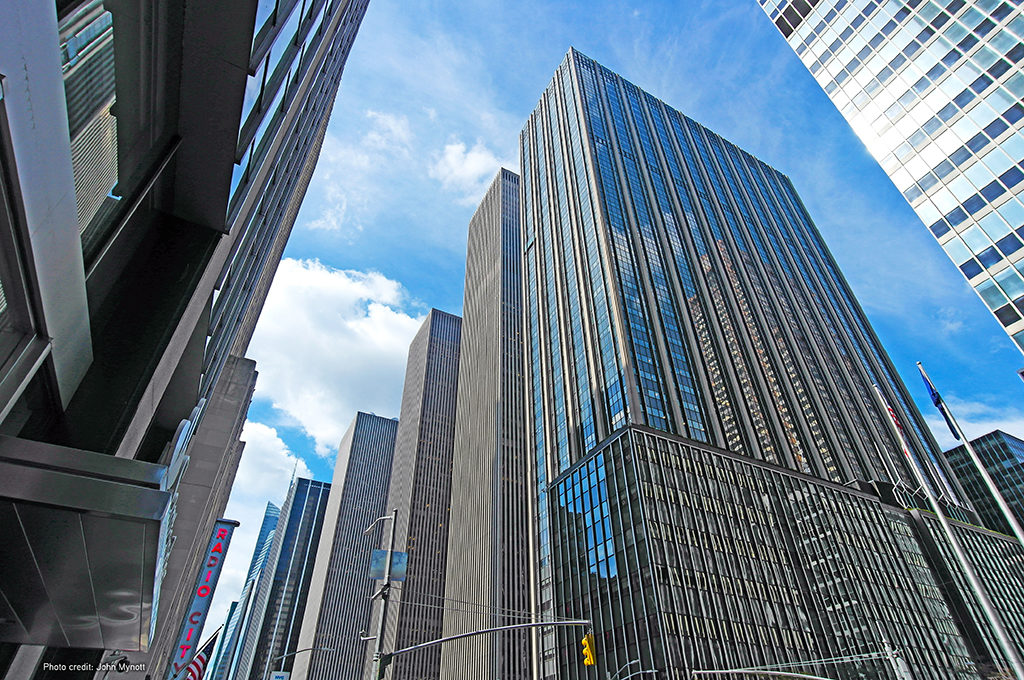The “new era” tech and creative companies—defined for our purposes as firms that have come online in the past 20 or so years, and have grown at substantial rates while subsequently expanding their office footprints—have affected arguably the two most significant components of the commercial real estate business today: the leasing of office space, and what that leased space looks like. Let’s look at the tech and creative companies that are overthrowing traditional drivers of leasing in the U.S., and how current workplace strategy trends—many of which are being driven by tech/creative—are influencing other sectors.
At Colliers, we’ve evaluated these trends through the lens of five key cities. If you guessed San Francisco, San Jose/Silicon Valley and Seattle, you obviously wouldn’t be wrong. But you might be surprised at just how much the new creative class has upended cities like Boston and New York, which have historically relied on more traditional industries as their office leasing stalwarts.
In Part Two of our series, we take a closer look at the New York market.
Read the latest report on The Impact of “New Tech” Tenants on U.S. Office Leasing
New Tech takes a bite out of the Big Apple
While Silicon Valley understandably receives the lion’s share of credit when it comes to establishing new-era tech and creative companies, New York City hasn’t exactly been a slouch in that department, either. It’s tough to go more than five minutes in a conversation with a tech executive before they hammer home the importance of finding and hiring the best talent. With NYC famously attracting highly driven, Type-A personalities who are trying to make it big, it comes as no surprise that many tech firms (Google, Facebook, Grovo, SoundCloud) have sought to expand their footprints throughout the city that never sleeps. In particular, the influx of West Coast tech extending their reach into Manhattan continues to boost net absorption for office leasing. Examples include LinkedIn, Salesforce and Indeed.com. What may not be so obvious, however, is the number of successful tech startups that started out in New York City. According to CB Insights’ Unicorn List, $16-billion WeWork launched in SoHo in 2010, while $1.5-billion new-media giant Buzzfeed was founded in 2006. And massive microblogging service Tumblr—which sold to Yahoo for more than $1 billion in 2013—also launched in the Big Apple.
Turning our focus back to Manhattan office expansions and leasing activity, the TAMI (Technology, Advertising, Media, and Information) sector once again surged beyond traditional FIRE (Finance, Insurance and Real Estate) leasing in the first quarter of 2016, accounting for nearly 50 percent of all transactions. While the TAMI catch-all also includes companies we aren’t designating as “new era”, it does contain that grouping, and is still a useful barometer when evaluating just how impactful these organizations have been on the commercial real estate landscape. For instance, Facebook added 200,000 square feet in Midtown South, already the tightest submarket in the city with a 7.5 percent availability rate. Not to be outdone, Google has committed to be the 264,000-square-foot anchor tenant at SuperPier (Pier 57), which extends its footprint west beyond the banks of the Hudson River.
When examining how the New Tech companies are influencing workplace strategy, it’s impossible not to talk about WeWork. In 2015, WeWork alone was responsible for 3 percent of all Manhattan leasing, taking nearly 900,000 square feet in total. Their mammoth 3-million square feet of space in Manhattan has forced both tenants and landlords in NYC to re-evaluate their spaces and adapt to the latest trends in workplace strategy. WeWork confirms the market demand for shared office space with cutting-edge amenities. The impact of new era tech companies and millennials can even be seen in the most institutional financial service companies. Citigroup has adopted an open floor plan at its new headquarters in Tribeca, mostly eschewing doors and allowing employees the desk of their choosing on any given day. At American Express, nearly 20 percent of its New York work force is part of a company initiative called BlueWork, which offers unassigned seating in an effort to stimulate creativity. Indeed, Dock 72, the 556,000-square-foot new office development at the Brooklyn Navy Yard, is a poster child for catering to today’s office occupiers as Boston Properties, Rudin Management and WeWork partner to raise the bar even higher.
New York City’s economy grew by 3.4 percent during the first quarter of 2016, according to a report from Comptroller, Scott Stringer. That was well ahead of the national 0.5 percent growth rate. According to William Dudley, the president of the New York Federal Reserve, New Tech is now the primary driver in job creation, surpassing Wall Street and the financial sector. In New York City, the impact New Tech firms have on office leasing is understated in the general statistics. With 50 percent of total absorption, historically attributed to FIRE, New Tech is having a significant impact.
Also: Read Part One: Overview | Part Three: Boston | Part Four: Seattle | Part Five: San Francisco | Part Six: San Jose and Silicon Valley
As president of National Office Services for Colliers, Cynthia Foster leads our national office platform across multiple service lines, including capital markets, tenant representation, leasing agency, property management and valuation.

 Colliers Insights Team
Colliers Insights Team

 Sheena Gohil
Sheena Gohil Bob Shanahan
Bob Shanahan Dougal Jeppe
Dougal Jeppe Kai Shane
Kai Shane
 Bret Swango, CFA
Bret Swango, CFA Michelle Cleverdon
Michelle Cleverdon
 Aaron Jodka
Aaron Jodka